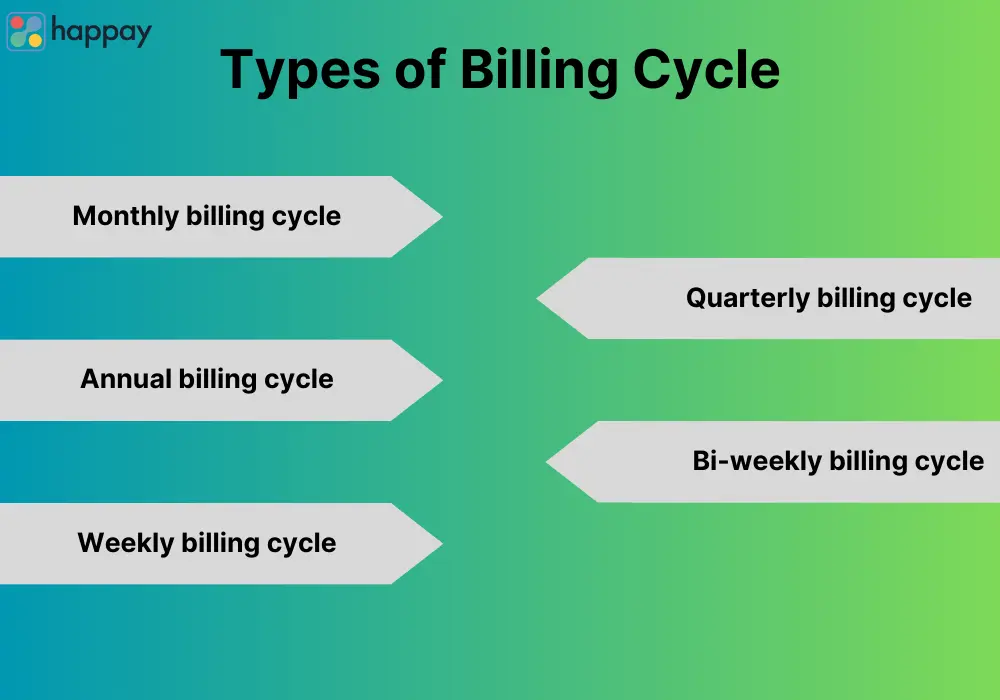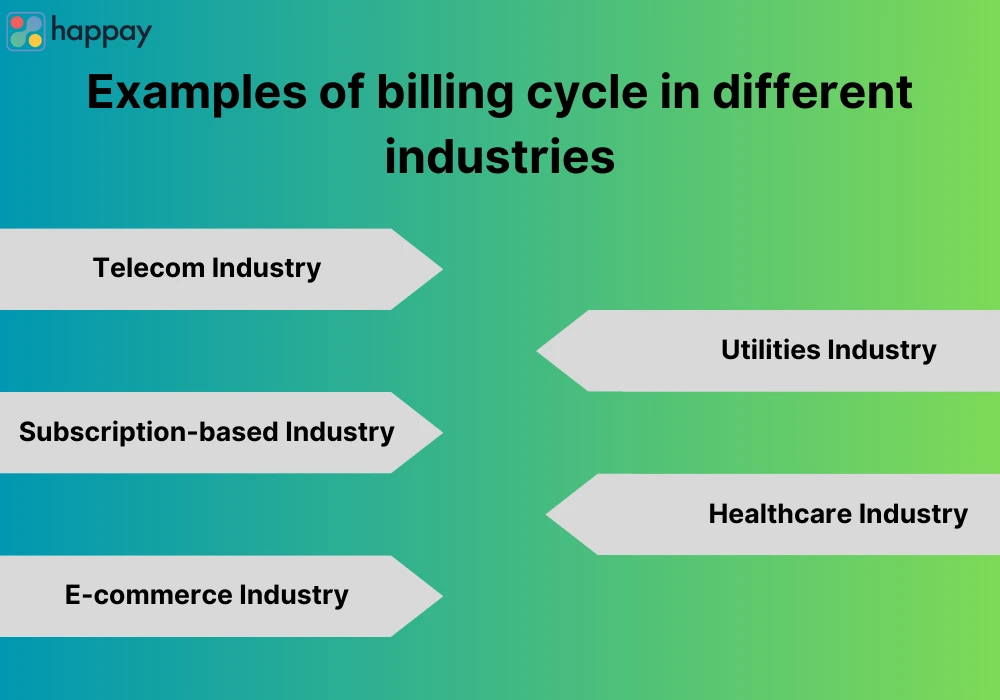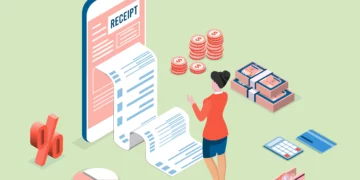Last Updated on November 28, 2025
What is a billing cycle?
It refers to the interval of time between the dates that a company issues invoices to its customers for goods or services provided, and the due date for payment of those invoices. It is a critical component of the billing process for businesses and is important for customers to understand in order to manage their payments effectively.
What is the billing cycle in credit cards?
The cycle in credit cards is the time frame between the last statement date and the current statement date. It is the duration within which a cardholder makes purchases, incurs interest, and makes payments.
Why is understanding your billing cycle important?
Understanding your billing cycle is important because it helps you manage your finances effectively. It allows you to plan and budget your expenses, avoid late payments, and minimize interest charges and fees. By knowing when your cycle begins and ends, you can monitor your credit card usage, pay your balance on time, and maximize your rewards or cashback benefits. Additionally, understanding this cycle can help you detect errors or unauthorized transactions and dispute them before they become a bigger problem. Overall, being aware of your cycle can help you stay on top of your financial obligations and maintain a good credit score.
Quick Read: What is it Billing, Types, Process, How it Works & Format
Types of billing cycle
There are several types of billing cycles that businesses can use.
Here are some of the most common types:

1. Monthly billing cycle
In this type of billing cycle, customers receive their bills once a month, usually around the same date each month. This is the most common type of billing cycle used by businesses, especially for recurring services like utilities and subscriptions.
2. Quarterly billing cycle
A quarterly billing cycle involves billing customers every three months. This type of cycle is commonly used for services that are seasonal or for businesses that offer long-term services, such as quarterly maintenance contracts.
3. Annual billing cycle
In this type of billing cycle, customers are billed once a year. It is typically used for long-term services, such as software licenses or insurance policies.
4. Bi-weekly billing cycle
This type of cycle occurs every two weeks, and it’s often used for payroll purposes.
5. Weekly billing cycle
A weekly billing cycle is similar to a bi-weekly billing cycle but occurs once a week. This type of billing cycle is commonly used for hourly employees.
Each type of billing cycle has its advantages and disadvantages. For example, monthly billing cycles are convenient for customers and can help with cash flow management, while annual billing cycles can be beneficial for businesses that want to reduce administrative costs and improve customer loyalty. Ultimately, the type of cycle a business chooses will depend on the specific needs of the business and its customers.
Quick Read: What is e-Billing? A Comprehensive Guide for Electronic Billing
How are billing cycles determined?
The determination of billing cycles usually depends on the billing system or software used by the service provider. Most billing cycles are based on a fixed time period, such as monthly, quarterly, or annually. For example, a monthly billing cycle typically starts on the first day of the month and ends on the last day of the month. However, some billing cycles may not be based on a fixed time period and may instead be based on usage, such as the number of units consumed or the amount of time spent using a service. In general, the frequency and duration of billing cycles are determined based on factors such as industry standards, customer preferences, and billing system capabilities.
What’s the duration of a billing cycle?
The duration of a billing cycle can vary depending on the type of cycle and the industry. For example, a monthly billing cycle would typically last for a month, whereas a quarterly billing cycle would last for three months. In some cases, an annual cycle may be used. The duration of a cycle is usually set by the billing system and can be adjusted by the organization if necessary.
How does a billing cycle work?
A billing cycle is a specific period during which a service provider or vendor generates a bill for services rendered or goods delivered to a customer.
Here’s a brief explanation of how a typical billing cycle works:
1. Steps in a billing cycle
The billing cycle typically starts with the delivery of goods or services, which triggers the generation of an invoice. The invoice is sent to the customer, who has a set amount of time to pay the bill. Once the payment is received, the account is credited, and the billing cycle ends.
2. Billing cycle process
The billing cycle process can vary depending on the type of billing. For example, monthly billing cycles are the most common for services like utility bills, credit cards, and internet providers. Quarterly billing cycles are used for business services like accounting or software subscriptions. Annual billing cycles are typically used for long-term contracts like insurance policies.
3. The role of billing systems in the billing cycle
Billing systems play a critical role in the billing cycle. They automate the billing process and manage customer information, invoicing, and payment tracking. Billing systems also generate reports that provide valuable insights into the billing cycle, such as customer payment history and revenue forecasting.
In short, a billing cycle is a process that involves generating invoices, sending them to customers, and receiving payments. The billing cycle can vary depending on the type of billing, and billing systems are essential in managing the process efficiently.
Quick Read: Difference Between Invoice and Bill: A Complete Guide
Examples of billing cycle in different industries
Here are some examples of billing cycles in different industries:

1. Telecom Industry
In the telecom industry, the billing cycle is usually monthly. Customers receive a bill at the end of each month, which includes charges for services used during that month, such as voice calls, text messages, and data usage.
2. Utilities Industry
In the utilities industry, the billing cycle can vary depending on the type of service. For example, electric bills may be billed monthly, while water bills may be billed quarterly. Customers are typically billed based on the amount of service they used during that billing period.
3. Subscription-based Industry
In the subscription-based industry, the billing cycle is usually determined by the subscription plan chosen by the customer. For example, a monthly subscription service will bill the customer on a monthly basis, while an annual subscription service will bill the customer once a year.
4. Healthcare Industry
In the healthcare industry, the billing cycle is often determined by the insurance provider. Patients may receive a bill for their portion of medical expenses, such as co-pays and deductibles, after each medical visit. Insurance providers may also bill patients on a monthly basis for their insurance premiums.
5. E-commerce Industry
In the e-commerce industry, the billing cycle is often determined by the payment method chosen by the customer. For example, customers who choose to pay with a credit card may be billed on a monthly basis for their purchases, while customers who choose to pay with PayPal may be billed immediately at the time of purchase.
Quick Read: 12 Best Invoicing Software for Your Business
Tips for managing your billing cycle
Here are some tips for managing it better:
How to keep track of billing cycle dates?
It’s important to keep track of your billing cycle dates to ensure you pay your bills on time and avoid late fees or other penalties. You can do this by setting reminders on your phone or calendar, signing up for automatic payment notifications from your billing provider, or simply noting the dates on a physical or digital calendar.
Strategies for managing bills
One effective strategy is to prioritize your bills by due date and payment amount. Paying bills with earlier due dates or higher payment amounts first can help you stay on top of your payments and avoid missed payments or late fees. Another strategy is to set a budget for your bills each month and allocate funds accordingly, making sure you have enough to cover all your expenses.
How to handle billing discrepancies or errors?
If you notice a billing discrepancy or error, it’s important to address it as soon as possible. This can involve contacting your billing provider to dispute the charges or request a correction, or even seeking legal advice if the issue is more complex. In some cases, it may also be necessary to file a complaint with relevant regulatory agencies or consumer protection organizations to ensure your rights are protected.
Quick Read: 9 Best Vendor Payment Management Software
FAQs
No, a billing cycle is not always 30 days. The length of a billing cycle can vary depending on the company’s policies and the type of billing cycle. Some billing cycles may be shorter or longer than 30 days, such as monthly, bi-monthly, quarterly, or even annually. It’s important to check your billing statement or contact the company to confirm the length of your billing cycle.
The billing cycle can have a significant impact on your payment for a few reasons. Firstly, the billing cycle determines the period during which you make purchases or incur expenses on your credit card or other accounts. At the end of the billing cycle, the account issuer will send you a statement that details your charges and payments during that period.
Based on the terms of your account agreement, you will then have a set number of days to pay the balance in full or make a minimum payment. If you do not pay the balance in full, interest charges may accrue on the remaining balance.
Cycle billing is a method of billing customers where instead of sending all bills out at the same time, the billing is spread out over the course of the month. Customers are divided into groups and each group is billed on a different day of the billing cycle. This method is often used by companies that have a large customer base to prevent a surge of customer service calls and payments all at once.
The term “1 or 2 billing cycles” typically refers to the amount of time it may take for a change or update made to an account to reflect in the billing statement. In some cases, the billing cycle for a particular statement may have already started before the change was made, so the update may not be reflected in that statement. Instead, the change may take effect in the next billing cycle, which could be one or two cycles away, depending on when the update was made in relation to the start of the current billing cycle.
For example, if a credit card holder makes a payment or adds an authorized user to their account, it may take one or two billing cycles for the statement to reflect that change.










Discussion about this post